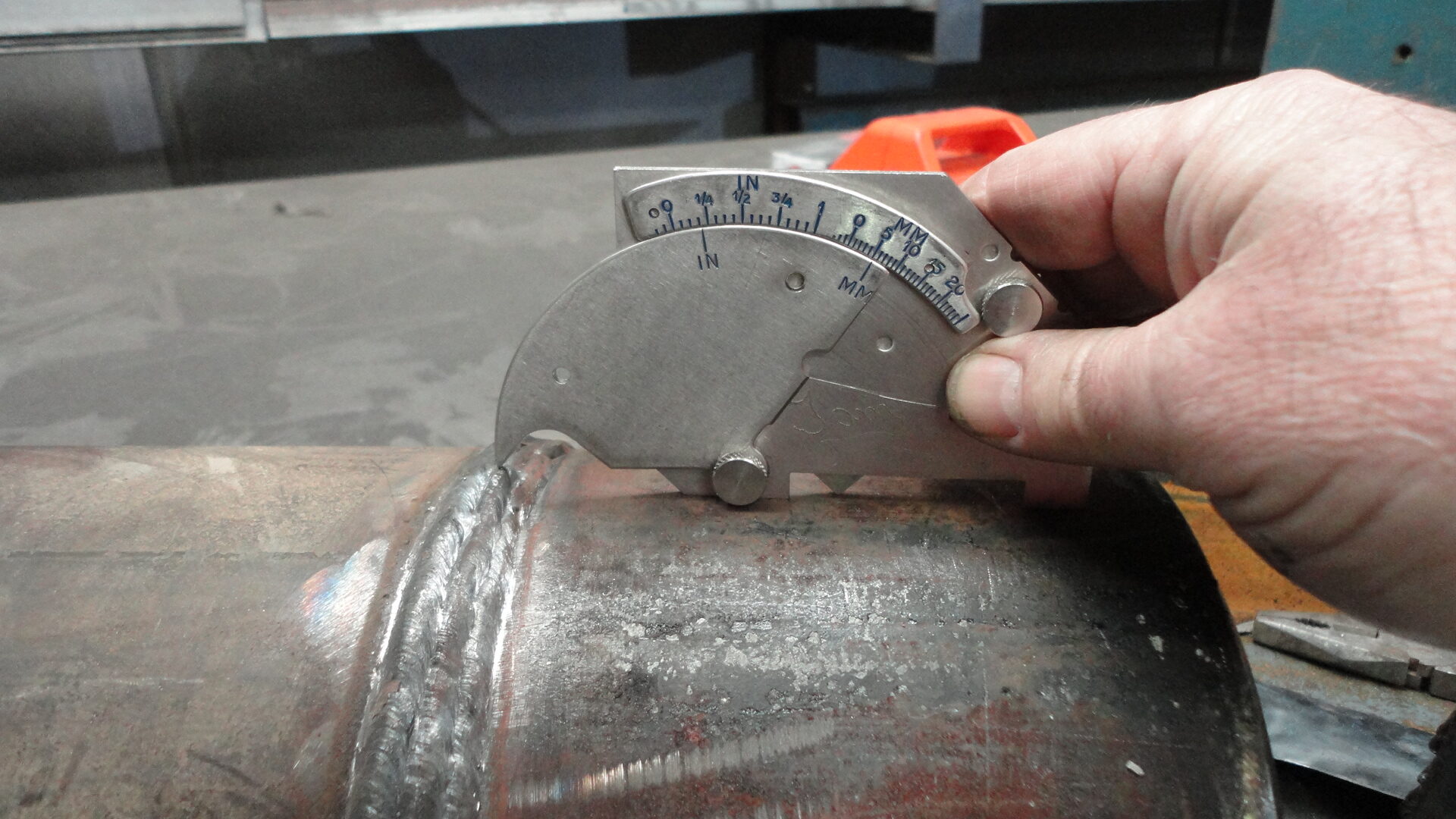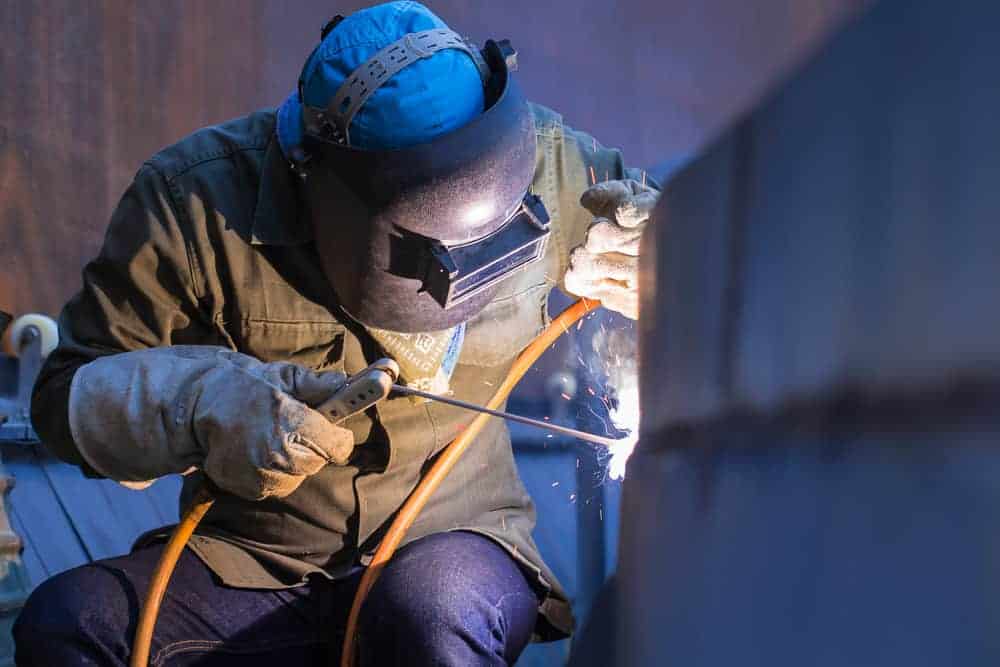Why Hire Specialist Welding Inspection Milwaukee for Your Projects?
Why Hire Specialist Welding Inspection Milwaukee for Your Projects?
Blog Article
A Detailed Checklist for Effective Welding Inspection Practices
In the world of welding, the stability of structures is extremely important, necessitating an extensive technique to inspection methods. Checking out these critical parts can yield insights that greatly influence welding procedures.
Understanding Welding Specifications
Welding criteria play a vital function in ensuring the quality and security of bonded structures and components. These criteria establish the requirements for products, treatments, screening, and inspection, thus giving a framework for regular top quality guarantee in welding processes. Different organizations, consisting of the American Welding Society (AWS), the International Organization for Standardization (ISO), and the American Society of Mechanical Engineers (ASME), have developed extensive criteria that govern different elements of welding.
Understanding welding criteria is essential for experts in the area, as adherence to these guidelines reduces the threat of defects and failings in welded joints. These requirements cover details requirements for weld high quality, including appropriate resistances, the sort of welding strategies to be used, and the qualifications needed for assessors and welders.

Pre-Welding Inspection Actions
Prior to any welding procedure begins, an extensive pre-welding inspection is necessary to determine possible problems that may compromise the high quality of the weld. This initial step functions as a vital structure for guaranteeing compliance with suitable welding codes and standards.
The first step in the pre-welding examination is to verify the materials being utilized. Next, it is critical to inspect the fit-up of the components to guarantee correct alignment and joint arrangement.
In addition, evaluating the cleanliness of the surfaces is crucial; contaminants such as paint, corrosion, or oil can detrimentally affect the high quality of the weld. Following this, a thorough assessment of the welding equipment should be conducted, guaranteeing that it is calibrated and in good working condition.
Last but not least, evaluating the qualifications of the welding personnel is crucial. Welders must possess the necessary certifications and experience to perform the details welds needed for the job. By adhering to these pre-welding assessment actions, the probability of problems and failures in the last weld can be dramatically minimized.

In-Process Evaluation Methods
In-process inspection methods play a vital function in guaranteeing the stability and quality of welds as they are being executed. These methods permit inspectors to determine issues or discrepancies from specifications in genuine time, therefore avoiding pricey repairs and guaranteeing adherence to design demands.
One secret strategy entails aesthetic inspection, where examiners assess the weld bead for harmony, infiltration, and correct account. This can be complemented by the use evaluates to gauge weld dimensions, making sure conformity with fixed tolerances. Additionally, the implementation of non-destructive testing (NDT) methods, such as ultrasonic testing or magnetic fragment screening, during the welding procedure can disclose subsurface defects that may not be visible externally.
An additional vital facet is monitoring welding parameters, consisting of voltage, amperage, and travel speed. Uniformity in these criteria is critical for achieving optimum weld top quality. Recording these criteria throughout the welding procedure supplies a traceable record for future reference.
Educating employees in appropriate inspection strategies and the usage of ideal devices improves the effectiveness of in-process inspections. By incorporating these practices, companies can accomplish better welds, lower rework, and eventually guarantee the safety and dependability of welded frameworks.
Post-Welding High Quality Checks
Complying with the conclusion of welding procedures, post-welding quality checks are crucial to validate that the welds fulfill all specified criteria and demands. These checks are essential for ensuring the honesty and toughness of the bonded joints. The assessment process typically starts with a visual examination, assessing for surface area problems such as splits, porosity, or incomplete blend.
Consequently, non-destructive screening (NDT) techniques, such as ultrasonic screening, radiographic testing, Extra resources or magnetic fragment testing, might be employed to find internal problems that are not visible to the naked eye. Each approach has its distinct benefits and is selected based on the weld's area, material kind, and the nature of the application.
In addition, confirming dimensional precision is an important element of post-welding quality checks. This includes determining the weld's dimension, positioning, and profile to ensure compliance with design requirements. Finally, evaluating the mechanical residential properties of the weld, including tensile strength and ductility, can supply more guarantee of efficiency under operational conditions. On the whole, thorough post-welding inspections are important for preserving performance, safety, and adherence to governing and sector standards.
Documents and Reporting
How can effective documents and reporting improve the welding evaluation process? Exact documents and thorough reporting are essential elements that ensure the stability and top quality of welding operations. Welding Inspection Milwaukee. They act as a formal document of inspection findings, promoting responsibility and traceability in conformity with industry requirements

A well-structured reporting system makes it possible for inspectors to clearly interact any kind of locations, non-conformances, or disparities requiring enhancement. This openness cultivates a setting of continuous improvement, as stakeholders can easily examine previous efficiency and implement corrective actions.
Additionally, reliable documents consists of detailed records such as welding procedure specs (WPS), welder credentials, and inspection checklists. These you could try here aspects offer a framework for examining weld high quality and adherence to established guidelines. In the event of disputes or quality concerns, thorough documentation functions as a dependable recommendation, decreasing ambiguity and protecting all events involved.
Finally, maintaining organized documents helps in training and licensing workers, guaranteeing that industry best techniques are promoted. Eventually, precise documentation and reporting not only enhance the welding inspection process yet additionally add to the general safety and integrity of welded frameworks.

Verdict
Finally, an extensive checklist for reliable welding evaluation methods is important for guaranteeing top quality and safety in bonded structures. Adherence to developed welding requirements, careful pre-welding examinations, extensive in-process assessments, and thorough post-welding high quality checks collectively add to the honesty of bonded joints. Additionally, persistent documentation and coverage of inspection findings improve responsibility and help with continual renovation. Applying these techniques will significantly help in compliance with sector requirements and ultimately cultivate a culture of top quality in welding operations.
Welding requirements play a critical function in making sure the high quality and security why not check here of welded elements and frameworks. Numerous companies, including the American Welding Culture (AWS), the International Company for Standardization (ISO), and the American Culture of Mechanical Engineers (ASME), have actually established detailed requirements that control various aspects of welding.
Complying with the conclusion of welding procedures, post-welding quality checks are critical to verify that the welds fulfill all defined demands and criteria - Welding Inspection Milwaukee.In verdict, a comprehensive checklist for efficient welding inspection techniques is crucial for making sure quality and safety in welded frameworks. Adherence to established welding criteria, meticulous pre-welding examinations, extensive in-process evaluations, and detailed post-welding quality checks jointly contribute to the stability of bonded joints
Report this page